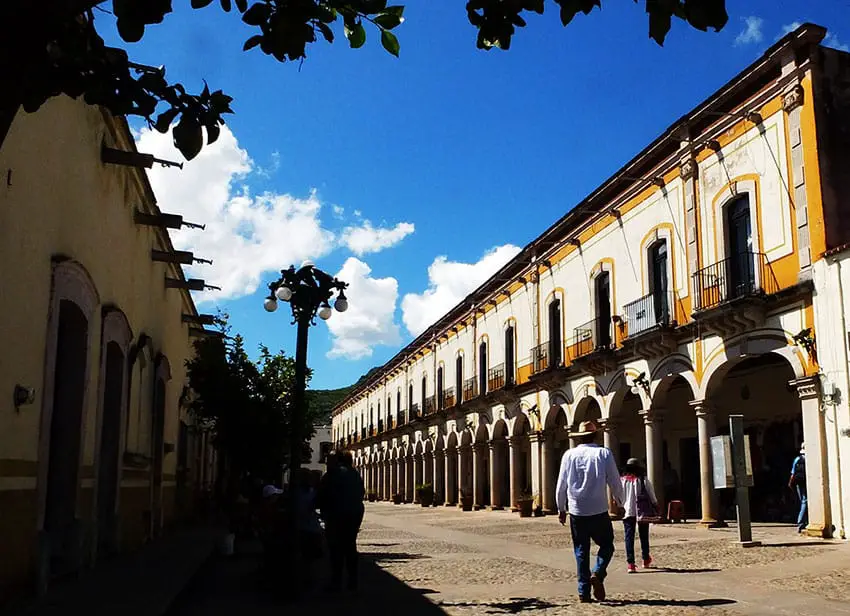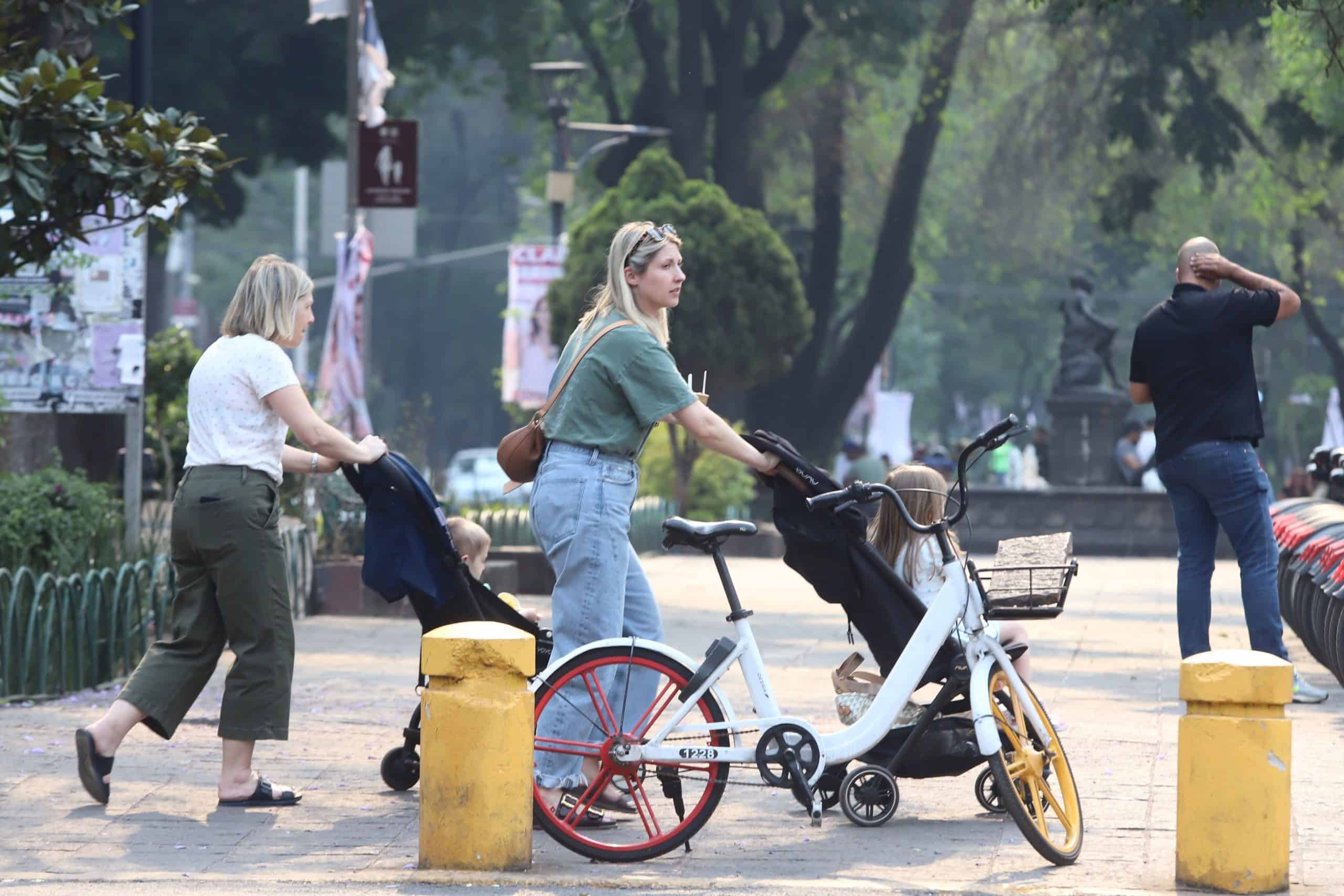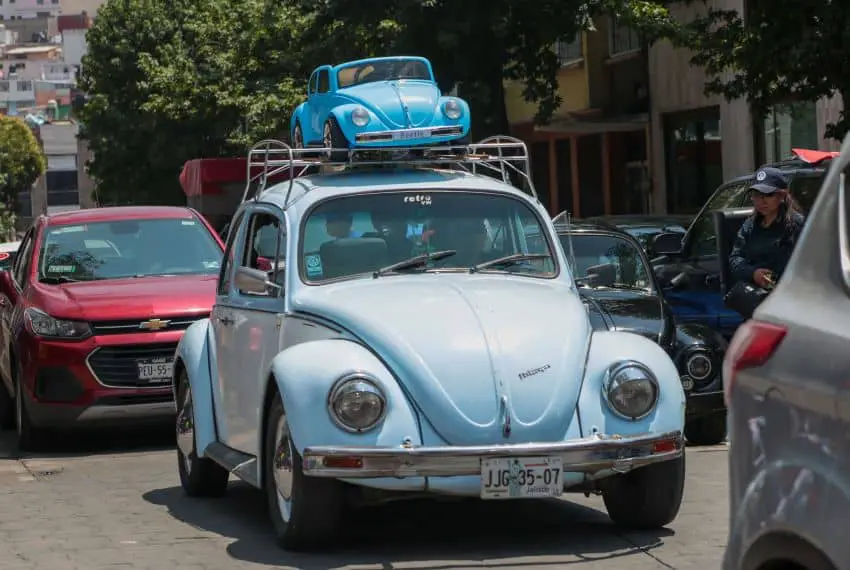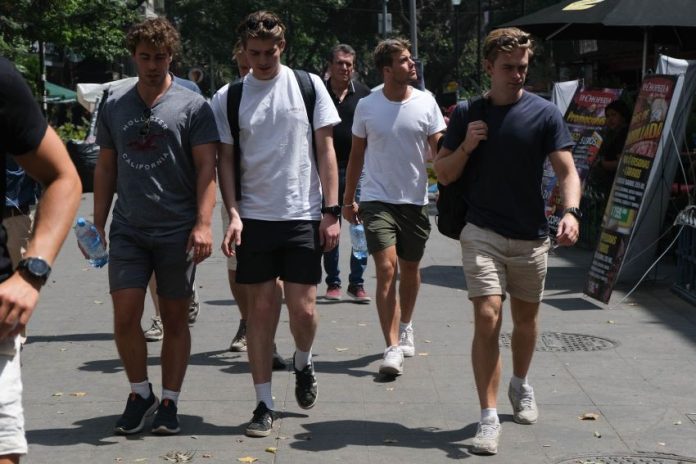It’s true: in many parts of Mexico, you really don’t need a car. Not like you do in most of the U.S., anyway. It’s also true that walking in Mexico can present some unexpected hazards. But never fear, friends! I am here to help you prepare.
From car dependence to freedom
When I first moved to Mexico at the age of 20, I had never owned a car. I’d also done precious little driving, and as a result was one of the least-mobile people in my peer group.

In Texas — not a state known for its great public transport system — this was a handicap and source of frustration. You weren’t getting anywhere without a car.
At my small Midwestern college things were easier, as everything I needed was on campus. Still, I’d have to depend on a friend’s generosity to get anywhere off campus. This was fine, but sometimes I just wanted to be able to get up and go without having to make a bunch of arrangements first.
Mexico, then, was a downright paradise. It offered me a kind of independence, even in an urban setting, that I’d never experienced before. I felt like Dorothy, walking out into a technicolor world.
No car? Meh. No need.
Why it’s different

If you’re from the United States or Canada and newly arrived in Mexico, you’ll likely be struck by how many people are on the street. Lots of people walk to lots of places! It’s something you never see in Texas where we barely even have sidewalks in non-residential areas.
The short explanation is that most parts of most Mexican cities don’t have U.S. style zoning laws. This means that — imagine this! — you can usually find almost everything you need right in your neighborhood. Small convenience stores with all the basics, bakeries, maybe even laundromats and taco stands. All within walking distance!
If you want to drive places to get these things you can, but it’s certainly not necessary. And if you don’t have a car, buses are usually plentiful and taxis, depending on where you are, are relatively affordable.
The nuts and bolts of moving around
That said, you’re going to need some practice getting around the urban landscape if it’s not something you grew up doing.

And I am here as well, my friends, to impart a bit of wisdom that will hopefully keep you accident-free! So get ready to be… less prone to accidents. It doesn’t sound sexy, but being in a hospital is even less sexy.
Remember that sidewalks and streets come in all shapes and sizes. Some of the shapes are holes. Some of the sizes are big. Sometimes there’s a sudden incline, and sometimes the incline is only on one part. Just trust me: you’ll want to keep your eyes focused on the ground as you plod around. If you’re tall, glance up every once in a while too — there are opportunities to hit your head a plenty!
Try not to be too grouchy about it: pretend you’re in a video game! Every obstacle dodged is a point.
You’re going to need some comfortable shoes with good traction. I cannot stress this enough. How many times have I nearly slipped and seen my life flash before my eyes?
Too many.

Surfaces can be slick for any number of reasons. It could be from rain, or just from soapy concrete. People wash the concrete outside of their homes and businesses, which at first I thought was super weird and now I appreciate. A dog peed there? No worries — the evidence is gone! Sometimes too, garages are inexplicably “paved” in… tile? Tile is slippery anyway but especially when it’s wet. Be ready.
Cars are still cars. While cars are more accustomed to pedestrian traffic here than in other places, you still need to be cautious.
So look both ways before crossing the street, even if it’s a one-way street. If you’re about to pass in front of a garage or an entrance, peek around the corner first. Remember too that streets are narrow, and it’s very possible a car will pass a mere foot from your walking body. Careful not to step off without looking!
Drivers are distracted these days, and infrastructure can’t be counted on to keep you safe. And for goodness sake, take a pedestrian bridge if one’s offered.
And remember: if you get tired, or just plain fed up, public transportation is there for you.
Unlike in Texas.
Sarah DeVries is a writer and translator based in Xalapa, Veracruz. She can be reached through her website, sarahedevries.substack.com.
